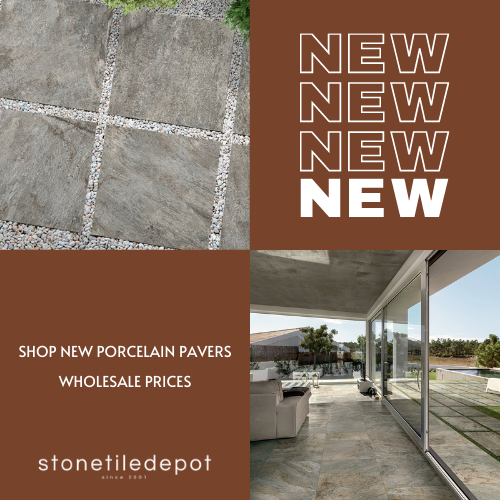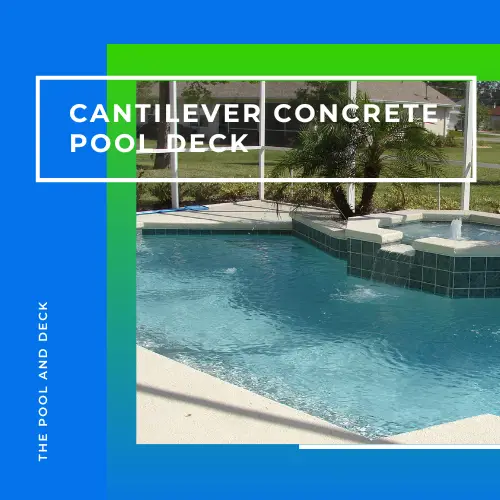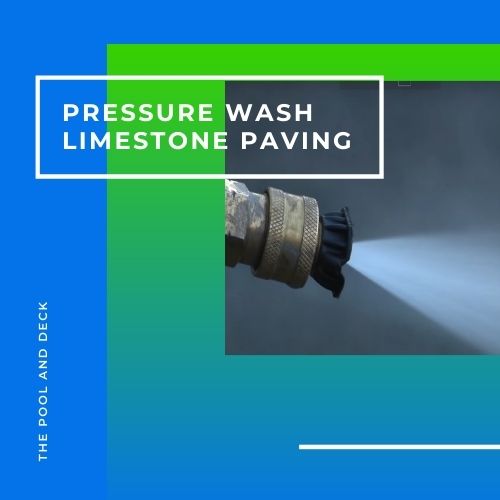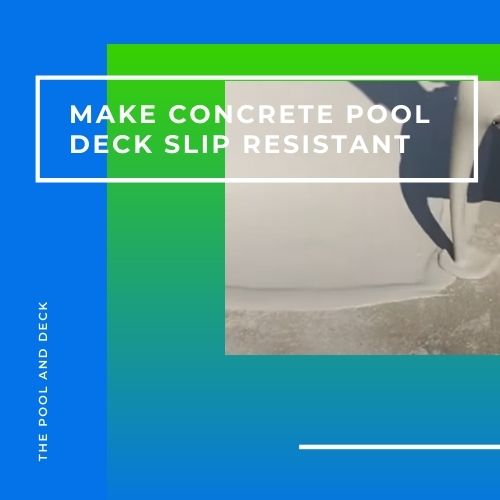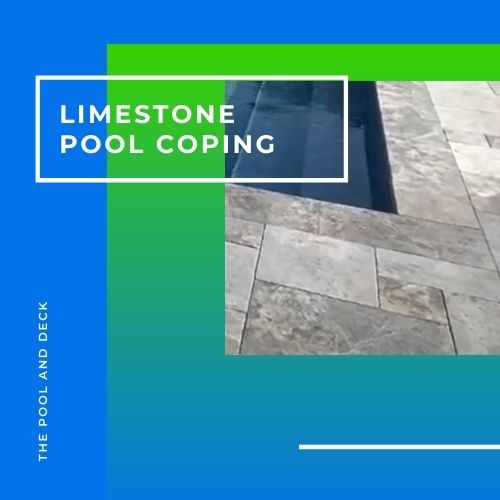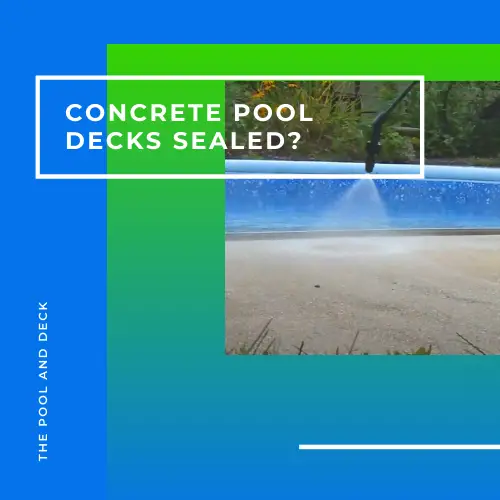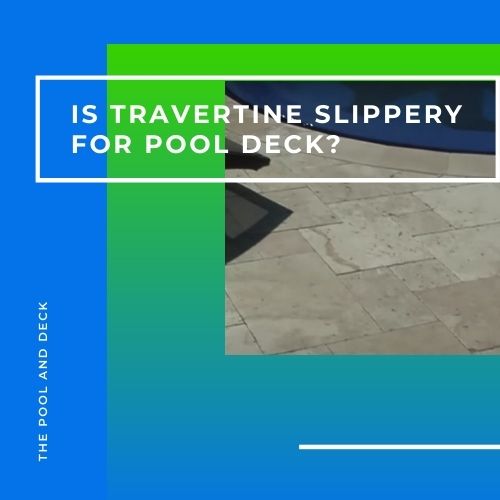4 Excellent Ways to Make a Concrete Deck Waterproof!
thepoolanddeck.com is a participant in the Amazon Services LLC Associates Program, an affiliate advertising program designed to provide a means for sites to earn advertising fees by advertising and linking to Amazon.com . The website is also an affiliate of a few other brands. The affiliate links never increase your purchase price. We do appreciate your support. Thank you very much!
Is a Concrete Deck Waterproof?
Do you have a concrete deck around your pool? Makes sense! A concrete deck is affordable & durable. It is relatively easy to install. There are many finish options such as smooth, brushed, etched and stamped. You can also paint or coat it. But, is a concrete deck waterproof?
Concrete, just by itself, is certainly not waterproof. On the contrary, concrete is porous. A concrete deck is a slab on grade. Water will seep in from top and wick in from below. Unless the concrete deck has been waterproofed.
“Concrete is a composite material composed of fine and coarse aggregate bonded together with a fluid cement (cement paste) that hardens (cures) over time.”
Wikipedia
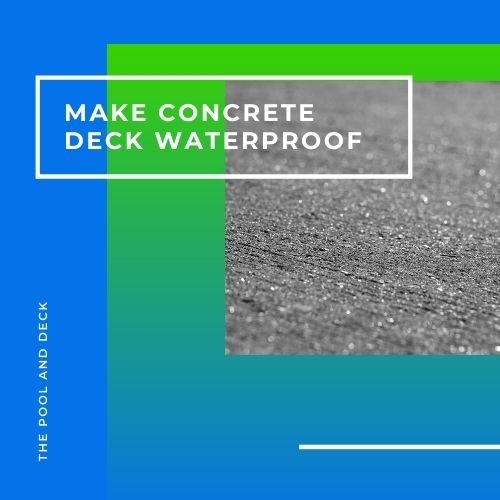
Concrete cures by a chemical process called hydration, where cement reacts with the water to form crystals. The crystals grow into a matrix enveloping the sand and other aggregates in a tight mesh.
Excess water moves to the surface and evaporates. This movement creates the pores (capillaries) in the concrete.
Does Concrete Need to Be Waterproofed?
Concrete needs to be waterproofed so that water does not enter the concrete pores. Water ingress into the pores is extremely damaging to the structural strength of concrete.
Freeze/Thaw Cycle
The water that enters the concrete pores expands and contracts with changes in the temperature. This puts physical pressure on the cement rich top crust, causing it to break down & crumble into dust.
In cold climates, concrete that is not waterproofed will experience freeze/thaw cycles, which is even more damaging.
Rebar Corrosion
Concrete has high compressive strength but relatively low tensile strength. Steel rebars are used to reinforce concrete and increase the tensile strength. Water seepage into the concrete pores can corrode the rebars.
Chemical Reaction
Cement is alkaline and the coarse aggregates (sand & gravel) have silica. Alkali can react with active silica to form a gel. The gel can then absorb water, swell and apply pressure and weaken the concrete.
Crack Growth
Water ingress into concrete cracks is an important reason concrete cracks grow.
To protect a concrete deck from water penetration you must waterproof it.
Here are 4 excellent ways to make your concrete deck waterproof:
1. Waterproof Membrane
How Does a Waterproof Membrane Work?
A Waterproof Membrane is a sheet or membrane that has very low permeability. Waterproof membrane is also referred to as “vapor barrier” or “moisture barrier”. The correct terminology is “vapor diffusion retarder”.
A waterproof membrane prevents the movement of water, moisture or vapor from an area of concentration to an area where it can cause damage to the concrete.
Permeability is the property of a construction material that allows water vapor to pass from one side to the other. This is measured in units called “perms”. The lower the “perm”, higher is the waterproofing effectiveness.
The International Residential Code (IRC) classifies materials by their permeability. Class I vapor diffusion retarders (0.1 perms or less) include:
- Sheet metal.
- Polyethylene sheet.
- Rubber membrane.
(Source: U.S. Department of Energy.)
Vapor barriers are usually sheets or membranes. But they can also come as liquid polymers which dry up to form a vapor retarding film. Liquid vapor barriers are useful in repair or waterproofing post construction.
For maximum effectiveness, the waterproofing membrane should be in direct contact with the underside of the concrete slab.
2. Concrete Mix Additive
What Is Waterproof Cement?
Waterproof Cement incorporates admixtures that work to block the concrete pores and make it difficult for water to penetrate. Concrete Mix Additives for waterproofing are permeability-reducing admixtures (PRAs).
Waterproofing admixtures work in one of the following three ways.
Hydrophobic
They use water-repellent chemicals derived from soaps or fatty acids, vegetable oils, and petroleum. The additive forms a water-repellent layer along pores in the concrete, but the pores themselves remain open.
Fillers
These are fine solids which may be inert or chemically active. Fillers such as talc, clay, siliceous powders, hydrocarbon resins, and coal-tar pitches may be used. The additive physically blocks the pores so that water can no longer traverse through them.
Crystalline
These are active hydrophilic chemicals mixed with cement. They increase the density of calcium silicate hydrate or generate crystalline deposits that block concrete pores to resist water penetration.
A concrete deck may be subjected to hydrostatic pressure depending on the soil condition and water table in you area. A hydrophilic crystalline admixture provides concrete with the greatest resistance to infiltration of water under these conditions.
Integral waterproofing admixtures—including crystalline and various densifiers–have proven to be a great solution for new concrete construction.
waterproofingmag
Waterproofing admixtures usually come in powder form and can be added to the concrete mix at the batch plant or directly to the hopper at site.
3. Penetrating Concrete Sealer
Can You Seal Concrete to Make It Waterproof?
A penetrating concrete sealer is an excellent way to make a new or an existing concrete deck waterproof.
There are two types of concrete sealers:
Penetrating Concrete Sealers:
Penetrating Concrete Sealers are silicon based compounds such as silanes, siloxanes, silicates & siliconates. These are clear low viscosity liquids that can be applied to the concrete deck with a low pressure spray.
A Penetrating Concrete Sealer penetrates into the tiny concrete pores, fills them up, solidifies and blocks them. They do not form any film on the surface. Silanes work the best with concrete decks.
Due to their small molecule size, Silanes are frequently used for sealing pre-cast concrete and high performance concrete such as: parking garages, bridge decks, building facades, and concrete forms.
ConcreteSealersUSA
Topical Concrete Sealers:
Topical Concrete Sealers are acrylics and can either be solvent-based or water-based. They form a thin clear film on the surface of the concrete deck that is impervious to water.
The water-based acrylic sealer is easy to apply, as it dries pretty fast, but is less durable. Polyurethane or Epoxy clear coats can also be used as topical concrete sealers. Topical concrete sealers make the deck smooth & slippery, so you must incorporate an anti-skid agent in them.
To make a concrete deck waterproof, a penetrating concrete sealer is a better choice.
I recommend using Foundation Armor SX5000 Water Based Silane Siloxane Penetrating Concrete Sealer.
The Armor SX5000 WB is a water-based Department of Transportation approved Silane-Siloxane penetrating concrete sealer. It penetrates deep into the substrate where it chemically reacts to form a hydrophobic barrier within the pores
This reduces the absorption of water by up to 95%. It protects concrete, from within, without changing the look or feel of the surface.
A penetrating sealer makes the concrete deck waterproof without altering the look or texture of the concrete. A topical concrete sealer may be added on, but should not replace the penetrating concrete sealer.
4. Liquid Rubber Coating
Is Liquid Rubber Good for Waterproofing?
Liquid Rubber Coating will seal any cracks in the concrete, making it very waterproof.
Liquid Rubber does not penetrate the concrete pores, so it must be applied after the concrete has been sealed with a penetrating sealer.
Before applying Liquid Rubber Paint, clean the concrete floor by degreasing, where required, and pressure washing the surface with water. Let it dry for 24 hours. Once the floor is dry apply a thick coat of Liquid Rubber Multi-Purpose Primer.

Liquid Rubber Multi-Purpose Primer improves adhesion. It is freeze/thaw stable as well as fast drying.
The finish should be 3-4 coats of Liquid Rubber Smooth Polyurethane Deck and Dock Coating. Use 1 Gallon of coating for every 40 square feet of deck area. You need to build up a high film thickness for best results.

Liquid Rubber Polyurethane Deck Coating is a high-performance polyurethane coating with a hard, durable & waterproof surface with excellent UV stability.
The coating is easy to apply and equally easy to maintain. The surface is smooth and easy to clean. The product is available in 10 color choices that will complement any pool deck décor.
Summary
The 4 excellent ways to make your concrete deck waterproof are:
- Waterproof Membrane – must be used after base preparation and before pouring the concrete mix
- Concrete Mix Additive – must be mixed with the concrete mix before placement
- Penetrating Concrete Sealer – must be applied after the concrete has fully cured. Resealing will be required periodically
- Liquid Rubber Coating – must be applied after sealing the concrete with a penetrating sealer
Thank you very much for reading the post. I do hope you found it informative and helpful.

